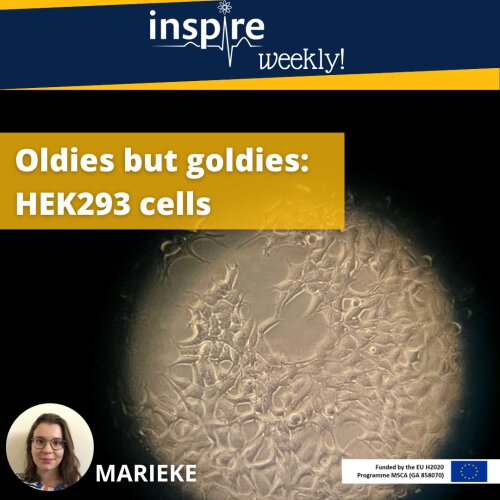16/03/2022 - Marieke (ESR #11)

The cells in the picture are HEK293 cells, usually 20 – 30 µm long, here seen with the microscope at 10x magnification. HEK293 cells were isolated from a human embryonic kidney for the first time in the Netherlands in 1973, so almost 50 years ago. Today, they are still used in laboratories all around the world. The HEK293 cell line is an immortalised cell line, meaning they don’t die, but keep reproducing and can survive in an artificial cell culture environment.1 The cell line is very popular thanks to its relatively easy growth and maintenance in cell culture and its ability to express recombinant proteins (e.g., ion channels or receptors on the cell surface).1,2 Several variations on the cells line are available. One example are the HEK293T cells, expressing the large T antigen and displaying an even more efficient transfection.1,2
I’m using this HEK293T cell line in my PhD project to express the VEGFR2, a receptor known to be involved in development of hypertension, linked to a luciferase. The day before the experiment, a DNA construct, containing the receptor and the luciferase, is added to the cells so that the next day, they will express this receptor-luciferase on their membrane and the experiment can be carried out, looking at how drugs are interacting with VEGFR2.
References:
- Thomas P, Smart TG. HEK293 cell line: A vehicle for the expression of recombinant proteins. J Pharmacol Toxicol Methods 2005; 51: 187–200.
- Arena TA, Harms PD, Wong AW. High throughput transfection of HEK293 cells for transient protein production. Methods Mol Biol 2018; 1850: 179–187.